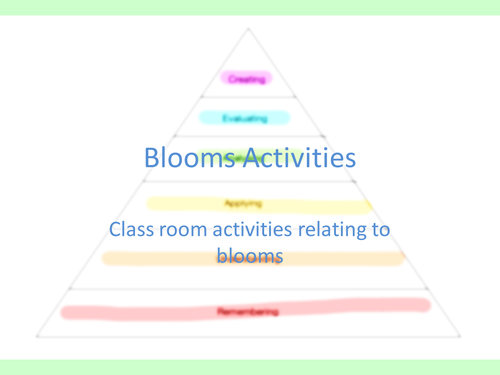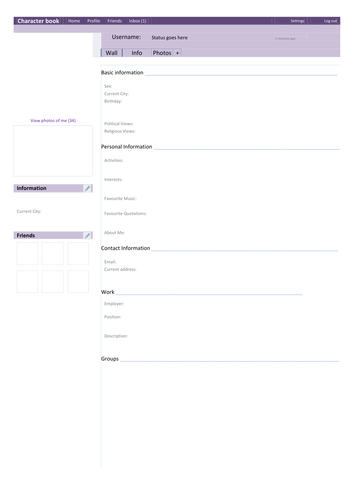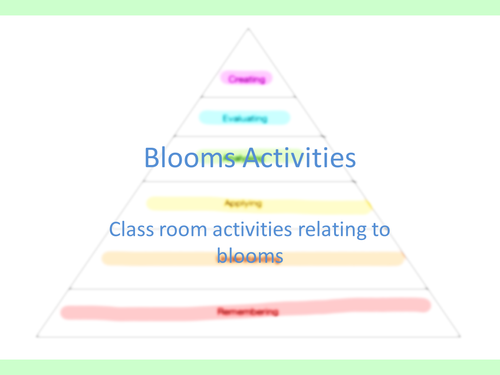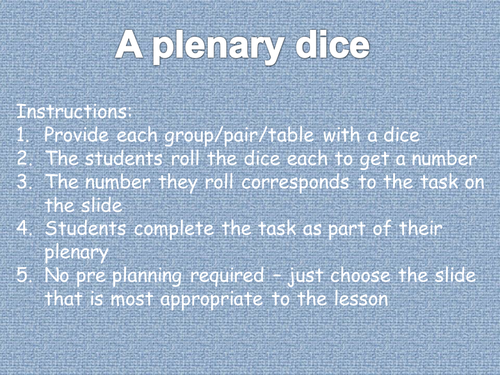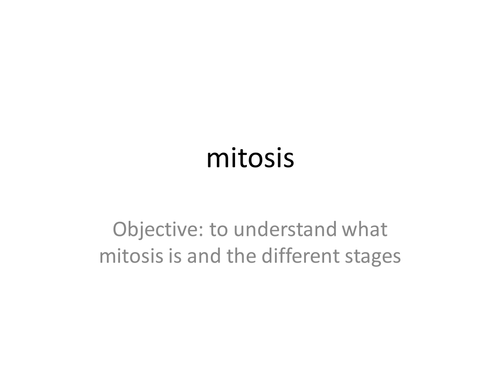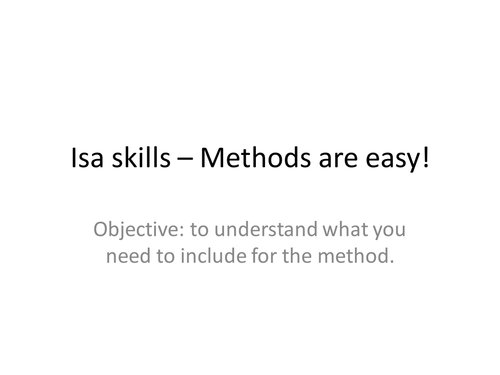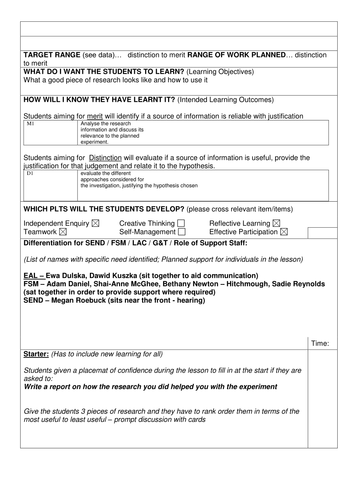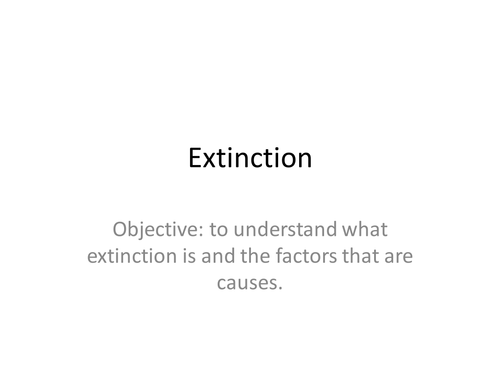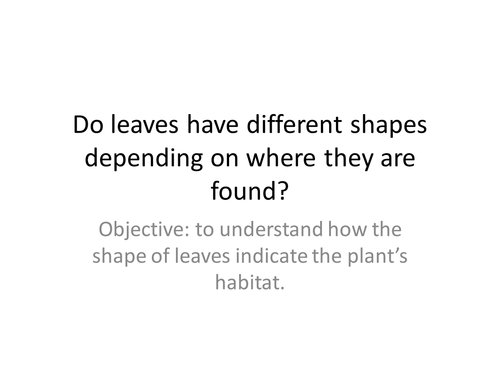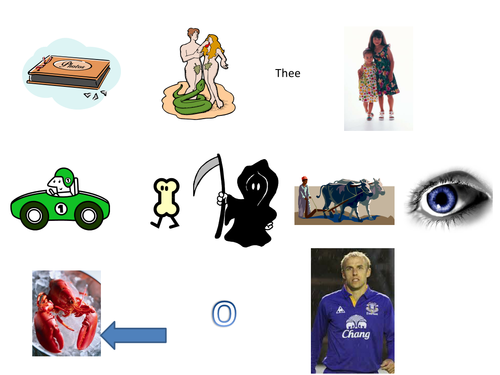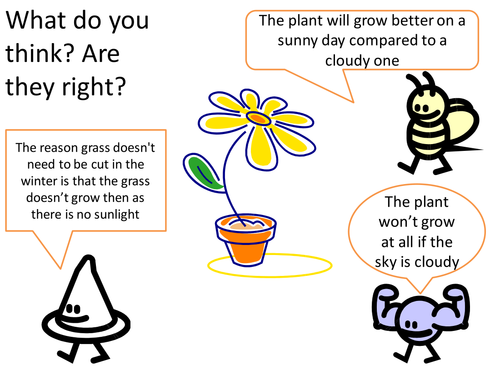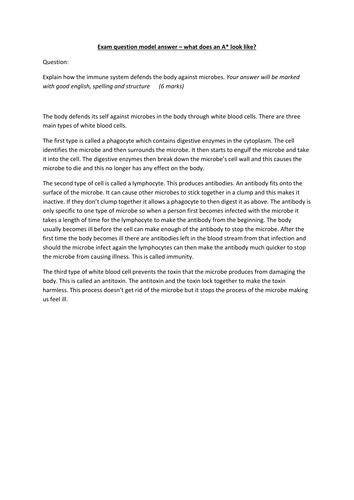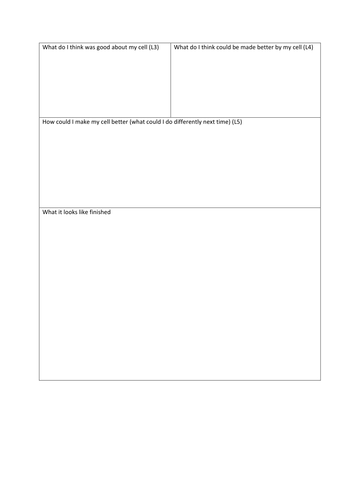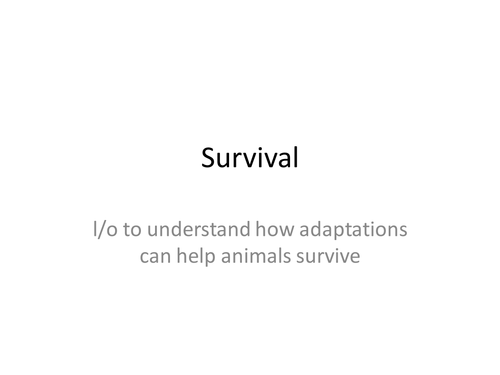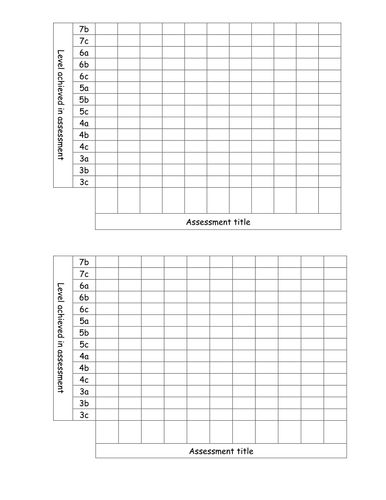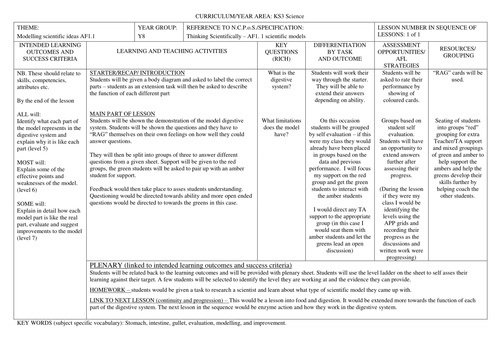
67Uploads
239k+Views
106k+Downloads
Biology

general activities that can be used for most subjects
a collection of ideas and templates to make lessons more engaging and interesting. most require little planning and have slides or documents that can be adapted and added into different material. some require a little more planning but really are great.

A collection of lesson acitivities for most subjects
Ideas and activities for lessons.
they are all my resources that I have put on her individually in one at a combined price. there are two or so activities that overlap.

12 ideas to create engagement
a set of generic ideas to get engagement from your class. some do require a lot of planning and some require very little.
There is a template with some of the scaffolds to help with differentiation and time saving.

differentiated activies related to blooms
a set of slides that can be added into your own lessons to aid differentiation in lessons
The six updated areas have six tasks attached to them.
These slides can be slightly adapted in a minimal amount of time to fit to the lesson.
A few require a little forward planning but nothing more than a quick five minutes.

6 generic plenary mats using dice
This is a 6 page power point with each slide being a mat that can be printed or shown in lessons to sum up the learning.
You will need a dice per group/pair.
6 tasks on each slide.
slide one - summary/knowledge tasks
slide two -number tasks based on consolidating the learning
Slide 3 - drawing tasks
slide 4 - writing tasks
slide 5 - creating a learning task for the lesson
slide 6 - helping others task

a lesson on mitosis
a complete lesson on a power point. video clip from you tube to answer questions from and then students model the process in modelling clay on a sheet.
an exam question to finish which can be peer assessed or self assessed.
very straightforward. students could be given the choice to draw or make the pictures.

isa session on common mistakes
a 2 part session to go through the common areas that students do badly in.
The equipment is just basic- sponge, scissors, measuring cylinder, washing up bowl, funnel, ruler.
Students cut the sponge to different sizes as the independent variable.

research for level 3 unit 2 btec science
A lesson based on how to use research and form hypothesis for the unit 2 btec applied science project.
could be used for other types of research too.
The only additional resource needed are some printouts of websites that can be used for planning an experiment.
I have added the follow on list of stuff that we used to check off what was required for the write up in the next lesson - it may be useful to adapt to fit the assignment written in your school

Environmental change and extinction
a fully contained lesson for higher biology - b1b aqa but could be used for other boards.
set up as a market place around the room with the posters.
students draw a table in the book with the headings: animal, numbers left, reasons for endangered status

Adaptation concept cartoon
A concept cartoon for animal adaptation. All statments are paritally right but the students can use them to discuss the ideas at the start of the lesson or at the end of the lesson to asses progess.
I have used it at both the start and the end of a lesson so the students can see how much progress they have made.

Adaptations of leaves in different light areas
a lesson to see if shade affects the size and the shape of the leaves. Students collected leaves from three areas and then measured the area on squared paper. they then came up with a conclusion if the amount of light available affects the leaf's size. there are lots of oppertunities to evaluate the practical.

Photosynthesis concept cartoon for discussion
Picture with 3 statements about plant growth and light. Students are to see what they think about them in groups. the answers are partly right but not completely right.... opens it up to discussion.

Some science Tarisa puzzles
Four puzzles I have made for science such as fuels, electromagnetic radiation, metal reactions and photosynthesis.
There is also a link to the software that you need to down load to acess.
It is free!

Lesson based on transmission of infection
a lesson based on how microbes are transfered. The lesson is based around Semmelweiss and what he discovered.
you will need the glow bug powder and a uv light. make sure you sprinkle it on worksheets first to show how its transmitted. it shows what surfaces it gets on to and how one person not washing their hands has a big effect.
you can also use the gel to demonstrate how well hand washing needs to be done to remove any traces of microbes.

Immune system - new style 6 mark qu for higher
a question based on the white blood cells and how it proctects against illness. the image file is how i presented it to the students and looked at the banding of the marks. we went through what was required and i explained that 6 points were not enough and that it was more about the structure of the answer. the model answer sheet shows the students what is required to gain the full 6 and an A*. hope you find it useful.

making cells evaluation
students made cells (specialised or basic) out of materials such as jelly, plastacene, paint, plastic cups, pain ect..
they then were asked to evaluate them with the help of the levelled scaffold. A photo of their cell was taken and printed to put in their books with the evlauation.
its for a lower level class where literacy and vocabulary is an issue.
it can also be used as an app assesment in a modeling contex

Survival and adaptations
a lesson based on adaptations for survival.
Includes lesson plan and all resources

Student graphs for self tracking
a graph that I use to stick in the front of students books and whenever they do a summertive assesment or task that provides them with information on their achievement they fill in a bar on the graph.
In my books I get the students to draw a thick black line on the graph where their target is so they can see quickly if they are on at or above the target.

Modelling digestion APP task focus
Modeling the digestive system. Students evlauate the model and suggest improvments to the model to meet the app focus. they then asses their evaluation against the app criteria attached.
To model the digestive system you need a: mortar and pestle, tights, blender, food, water and a washing up bowl.
The motar and pestle are the mouth and teeth, the blender the stomach, the tights the intestines and the washing up bowl is the body.

